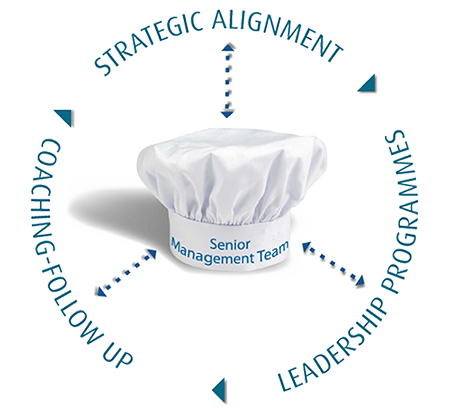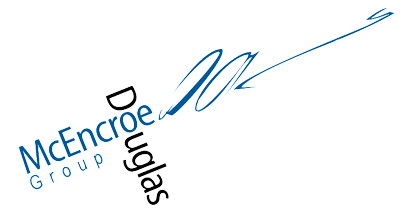
66% of business strategies never get implemented mainly because of a lack of real alignment between the strategy, internal policies, organizational culture and leadership. To improve business performance an integrated approach is needed. In order to help my clients meet their business challenges, I have combined consultancy, training and coaching in novel ways that help organisations achieve better results.
INTERVIEW WITH SKY NEWS
Watch this brief video of my interview with Hellen Dalley from Sky News to find out about my ideas on what good leadership is and how you can develop it.
MY APPROACH

The results
“Douglas is an intrinsic part of the Europcar history of the last twenty years and his presence is still felt. His mixture of intellectual intelligence, practicality and his great sense of humour has contributed to give our organization a clear vision with respect to leadership and the path to follow in order to make our company the undisputed leader of car rentals in Spain”.
Mariano Ballesteros
Director of Human Resources
Europcar
“Doug was an excellent CEO Coach and did a superb job of managing a major cultural change project at RevTech Media. Highly recommended”.
Lachlan Harris
Founder and CEO of RevTech Media, FiftyUP Club & One Big Switch
“Doug McEncroe is a rare blend of talent. Unbelievable insight into leadership development and organizational transformation; senior team alignment; solid change management; and organizational development. In addition to his practitioner skills, I have come to value Doug’s insight, passion for his work, and prowess as an executive coach and facilitator. Highly recommend for executive and senior level work across multiple industries and cultures”.
Keith Caver
Former Director North American Customs Solutions CCL.
Presently, American Practice Leader, Tower Watson
“In Hewlett Packard, Douglas made an excellent contribution. His professionalism and his rigor contributed to the awakening of and advancing in the growth, development and personal satisfaction of all the managers who participated in the Leadership Development Project. Through a process of reflection and interior dialogue oriented towards action, he left his mark on all of them”.
Luis Carlos Collazos
Professor at ICADE, ex-Director of HR at Hewlett Packard and presently Director of HR at Hispasat
“I have known Douglas for nearly two decades. He was the first person in Spain to work with certain instruments and processes that are today very common, for example, 360º Feedback and Coaching. He has been and continues to be a reference point for me in the field of Leadership. I have had the good fortune to work with him on many projects, all of them fun but also very successful”.
Carlos Pelegrín Fernández López
Director of Talent
France Telecom Spain
“In DDI we always focus on improving the business results of our clients. Douglas has worked for us on important projects all over Europe from Geneva to Moscow. His depth of knowledge on leadership and his ability to link leadership development to effective execution of business strategy has been a key asset for us and has added great value to our clients. I highly recommend Douglas for senior executive and senior level work in any sector. Doug is a great partner and excellent faculty and coach”.
Martina Michel
European Head of Consulting Europe , DDI
“Douglas McEncroe has worked with various companies in which I have been Director of Human Resources, AT&T and Telefónica among them. His involvement has been important in Leadership Development projects of a very strategic nature and in projects that implanted 360º Feedback and coaching for senior executives, all achieving very good results which were positive for business. Managers who worked with Douglas highlighted his great professionalism, his commitment to the client and his technical mastery of his profession. Without any doubt I would hire Douglas’s services any time I had a project related to Leadership Development and Change Management, above all in organizations going through profound transformations”.
Plácido Fajardo
Former Human Resources Director
Telefónica and AT&T
“I had the opportunity of working with Douglas and his team at Cisco Systems when I was Director of Human Resources for the Mediterranean Region. His contribution was critical in Leadership Development projects and in Team Development with our Senior Management Team. His ability to combine a coherent methodology with an approach that is both pragmatic and practical for senior managers is very difficult to find in other Leadership Development consultants. I would not hesitate for a minute to use his services and his vast experience at any time I have a challenge related to the development of management capabilities, leadership or change management”.
Luis Massa
Director of Human Resources
AstraZeneca Spain (Formerly of Cisco Systems)
“Douglas McEncroe has worked for Vodafone Spain on various projects of enormous strategic importance for our company:
- Leadership Development Programmes for Heads and Managers;
- Executive Coach on the Management Development Programme One Way;
- Analysis of Senior Managers and Team profiles using Myers-Briggs.
IIn all of these Douglas has demonstrated great professionalism and thorough commitment and innovation and has added enormous value by the way he has contributed to the development of our senior directors and managers. His role was fundamental at a time when the first priority was development of our managers on a project in which more than 500 of our executives took part”.
Pedro Díaz Rodríguez-Valdés
Human Resouces Director
Vodafone Spain
The latest from my blog
Top ten Gambling on line Canada Internet sites for real Cash in 2025
10 July, 2025Content
Gain benefit from the bonuses and you may campaigns given by online casinos, because these also provide extra finance playing having while increasing your overall fun time. BetOnline is actually a versatile platform giving wagering, online casino games, and you may real time specialist alternatives. Professionals have access to multiple position and you may desk online game, which have constant promotions and a stylish welcome bonus. [keep reading]




